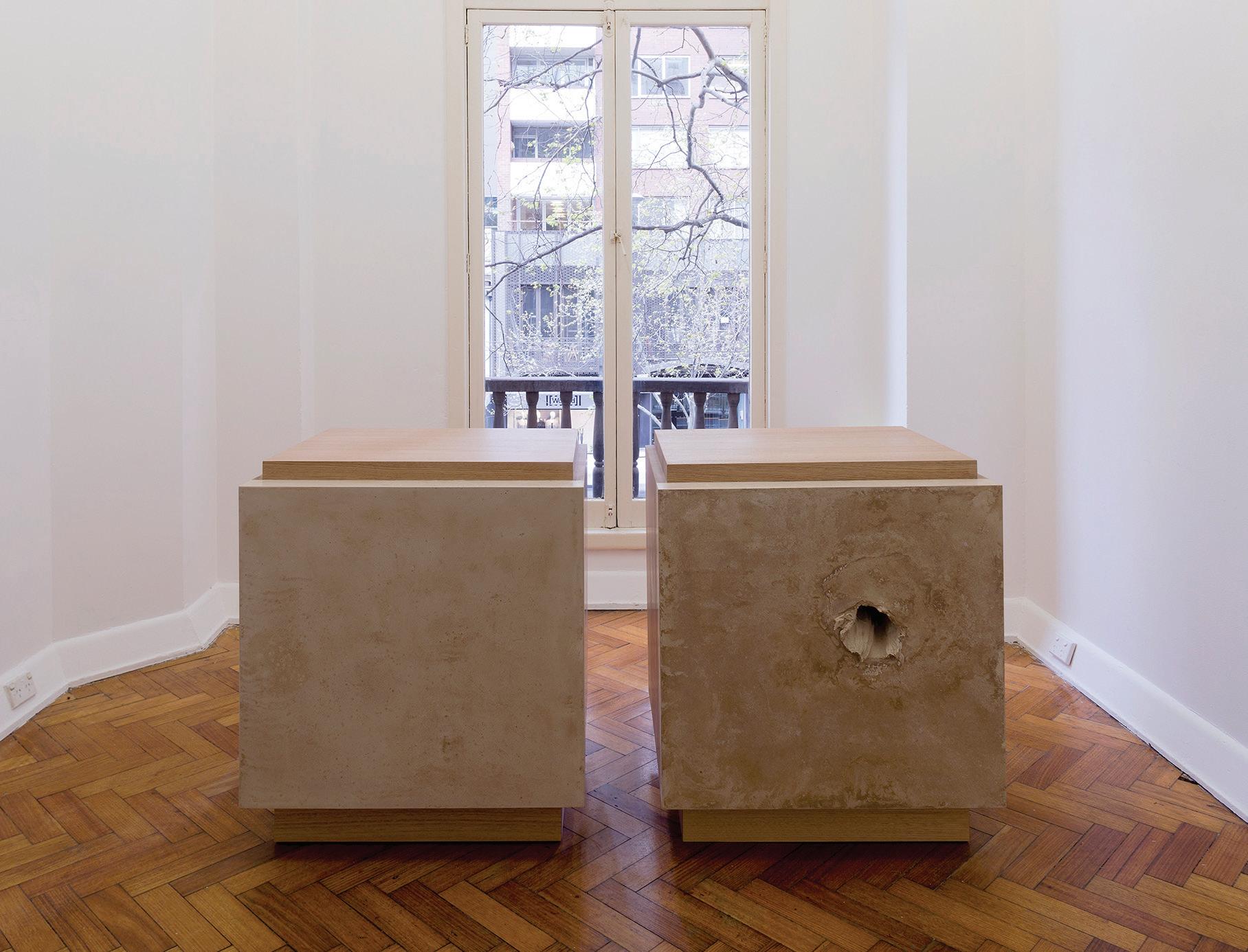
2 minute read
Fiona Abicare
Fiona Abicare
Fiona Macdonald
Advertisement
Overexposures and America in the Dark were conceived as part of Fiona Abicare’s exhibition Americano (2016)—an aesthetic affair between sculpture, and the dreams and ideals of the production design of the Hollywood Studio System (1927–1949). Sculpture’s role in this Hollywood affair, as a performer in the filmed interior, draws on a melange of classical design motifs to reproduce in its screen image a beau ideal of display—a role that returns, via the Hollywood Regency design style, as scenography for the domestic interior, set dressing for the display of domestic life as art.
These works—credenzas, as the artist describes them—are not axiomatic. On first encounter in the context of the Americano exhibition at Sarah Scout Presents, placed in the Paris End Regency setting of the gallery with its parquet floors, French windows and Georgian fanlights, they appear in a supporting role, as plinths for an accompanying pair of vesselforms. A seemingly benign pair that are also disturbingly asymmetric. The dense slab of clay maché that forms the front face of each piece—and threatens the equilibrium of their cuboid form and their immaculate Victorian Ash construction—is also the scene of a radical intervention, an opening produced in the façade of one of the pair by the penetrating force of an unknown projectile.
As their titles suggest, the credenzas embody a relationship to light, or its absence—too much or too little. Seeing these works at the artist’s studio exposed their autonomous being, the closed structure changing from supportive, to hermetic and self-referential. These credenzas are not functional; the interiors are inaccessible—even the forced opening in the façade of America in the Dark reveals no aperture to an interiority, only a deep pit in the plasticity of that interior. Next to Overexposures—a domestic monolith extreme in its closure and resembling a tomb—the void of America in the Dark appears as an invitation to participate in its form and with the action that produced it.
This simultaneity of exclusion and participation is a key concept across Abicare’s work. Here, it is a logic of the work and a key affective experience of the work for the viewer; design and art, film set and gallery, each occurring at once and exchanging apparatus and anatomies across time. And as part of that exchange a double-movement takes place, at once bringing into view the hegemony of such a circulation of forms, and simultaneously exposing the void of America in the Dark as an expression produced from within its interior plasticity against the Presence of Hollywood Regency, its tropes of Empire, its celebrity carte blanche, and its procuring and conversions of forms. Overexposures and America in the Dark are double-movements; they illuminate the transactional network of desire that fuels that circulation of forms through the dreammachine; at the same time, they dis-establish those symbolic engendering actions by producing themselves as difference. The benign is simultaneously repellent, the transgressive is simultaneously intimate, and each formed and experienced materially and temporally. A difference formed within and through the artworks. As a kind of revolutionary time. A kind of Intimate Revolt.
Fiona Abicare Overexposures 2016 (left) and America in the Dark 2016 (right)










